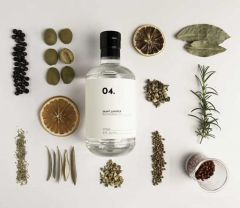Sommeliers Choice Awards 2025 Winners

Lammershoek Winery
Category: Winery
Country: South Africa
Date:29/11/2016
LAMMERSHOEK SWARTLAND- SOUTH AFRICA The Valley of Life: The name Lammershoek dates back more than three centuries, linked to the preservation of life in a once harsh environment. Meaning “lambs’ corner”, legend has it that ewes sought shelter here in the forest for survival of their lambs when they felt threatened by the black eagle or lammervanger (“lamb catcher) which abounded in the area. And here in the Aprilskloof valley of the Paardeberg Mountain, Lammershoek’s centuries-old farming legacy is perpetuated in the seasonal pulse of nature and its ever-renewing life cycle. New reins, new vibrancy Lammershoek is owned by a trio of prominent German businessmen and sporting executives and is poised to leave a fresh footprint in both the South African domestic and the export markets. Three years ago, the owners selected this unique land in a still unspoilt environment which reflects their belief that joie de vivre and life enrichment can be reconciled with personal responsibility and the balance of nature. A new management team was introduced at the beginning of 2015 and the green hills of Lammershoek are alive with the growth and dynamism of a new era. Striving for excellence in individuality • The majority investor is legendary soccer star Franz Beckenbauer, with internationally prominent communications specialist Andreas Abold and sports promotor Fedor Radmann. • The management team is led by Schalk Opperman, general manager and winemaker; Charl van Reenen, viticulturist and farm manager; and Zaine Pritchard, marketing and sales manager. Once a hiding place for lambs … The flock of sheep owned by the original owner of Lammershoek – a Cape Colonial “free burgher” of the early 1700s – has over the centuries grown into an impressive enterprise where mixed stock farming has been replaced by specialised wine-growing. After having grazing rights for 17 years, Adriaan van Jaarsveld acquired full ownership in 1718 and the 180 hectares farm soon came to life with livestock, mainly cattle and sheep, while cultivation started with wheat and later some 600 vines. Van Jaarsveld left in 1721 but the foundations were laid for a series of family-based owners to develop this into a top wine farm and cellar which is today under the ownership of powerful and purposeful German investors. Vineyards in the “secret corner” Still a largely undiscovered gem, Lammershoek, in a picturesque “corner” of the Swartland District, is planted to 60 hectares of vineyards at altitudes of 80 - 300 metres – farmed mostly by the typical Swartland dry-land (unirrigated) method. The white cultivar mix comprises Chenin Blanc, Chardonnay, Viognier, Hárslevelü and Marsanne. The reds are Syrah, Carignan, Grenache, Mourvèdre, Pinotage, Zinfandel and Tinta Barocca. Most of these are in the form of old bush-vines of up to 50 years, with Chenin Blanc comprising 60% of the white cultivars and Syrah 60% of the reds. These are warmer climate cultivars, an integral part of the Swartland’s award-winning tradition, where low-yielding vines produce small, but intensely flavoured bunches. Altogether 80% of the vineyards are bush-vines of which only 40% are under irrigation, which results in particularly flavourful, fruit-driven wines. CLIMATE – Mediterranean, with hot, dry summers and cold, wet winters. SOILS – Mainly deep and well-drained decomposed granite, quite sandy and contributing to the wines’ fine texture and lingering aftertaste. The dense layer of clay below aids water retention for the South African summer. WINES – The wines are pure, with a good natural acidity and capture the uniqueness of the Swartland District. As a member of the Swartland Independent Movement, we strive for minimum intervention in fruit-driven wines that express the terroir. Wine-making Rather than manipulating the lovely old bush-vine fruit into something ‘unnatural’, we merely guide the juice along its way to showcase what can be achieved with the characteristic Swartland fruit character. The grapes reach phenolic ripeness at a very early stage, helping production with minimum intervention. Various hands-on techniques are used, including small batch selection right from the vineyard and natural yeast fermentation. The wines are left on the lees for three months before being racked and returned to barrels and tanks for further aging of 6 - 12 months in a variation of wooden foudre, concrete tanks and egg-shaped tanks – the barrels ranging from 225 - 600 liters. Bottled with the minimum use of sulphur and filtration to ensure terroir-driven fresh fruit flavors.

















